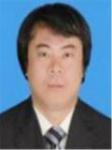Docket: 2005-1671(IT)I
BETWEEN:
LAURA J. FOLEY,
Appellant,
and
HER MAJESTY THE QUEEN,
Respondent.
____________________________________________________________________
Appeals heard on October 13, 2005 at Saskatoon, Saskatchewan
Before: The Honourable Justice L.M. Little
Appearances:
For the Appellant:
The Appellant herself
Counsel for the Respondent:
Brooke Sittler
____________________________________________________________________
JUDGMENT
The appeals from the assessments made under the Income Tax Act for the 2001 and 2002 taxation years are allowed, without costs, and the assessments are referred back to the Minister of National Revenue for reconsideration and reassessment in accordance with the attached Reasons for Judgment.
Signed at Ottawa, Canada, this 26th day of January 2006.
"L.M. Little"
Little J.
Citation: 2006TCC55
Date: (略)
Docket: 2005-1671(IT)I
BETWEEN:
LAURA J. FOLEY,
Appellant,
and
HER MAJESTY THE QUEEN,
Respondent.
REASONS FOR JUDGMENT
Little J.
A. FACTS:
[1] The Appellant maintains that in the 2001 and 2002 taxation yeas she was both an employee and also a freelance instructor and field archaeologist. The Appellant claims that she is entitled to deduct various business expenses from the income that she received as a freelance instructor.
[2] The Respondent maintains that the Appellant was an employee in the 2001 and 2002 taxation years and that as an employee she was not allowed to deduct the losses that she claimed.
[3] The evidence before the Court established the following facts:
(a) during the 2001 and 2002 years the Appellant was employed as a school principal by St. Paul's Roman Catholic Separate School Division #20;
(b) during the 2001 and 2002 years the Appellant was a lecturer at St. Thomas More College and the University of Saskatchewan. During the summers of 2001 and 2002 the Appellant was a field archaeologist and she organized and supervised trips to the Middle East with students from the University of Saskatchewan. (Note: St. Thomas More College is an affiliated college of the University of Saskatchewan);
(c) during the 2001 year the Appellant received income totalling $92,282.00 from the following sources:
St. Thomas More College $ 7,712.40
University of Saskatchewan $ 8,300.15
St. Paul's Roman Catholic Separate School Division #20 $76,269.55
Total $92,282.10
(d) during the 2002 year the Appellant received income totalling $82,251.00 from the following sources:
St. Thomas More College $ 4,011.00
St. Paul's Roman Catholic Separate School Division #20 $78,240.00
Total $82,251.00
(e) The Appellant was paid a salary by St. Paul's Roman Catholic Separate School;
(f) St. Paul, St. Thomas More College and the University of Saskatchewan each provided classroom space, office space and a telephone for the Appellant to perform her duties at no cost to the Appellant;
(g) in filing her income tax return for the 2001 and 2002 taxation years the Appellant claimed employment expenses relating to her employment with St. Paul's Roman Catholic Separate School of $1,227.55 and $1,658.75 respectively;
(h) the Appellant was allowed to deduct employment expenses relating to her employment with St. Paul's Roman Catholic Separate School of $1,227.55 in 2001 and $1,658.75 in 2002;
(i) in filing her income tax returns for the 2001 and 2002 years the Appellant also claimed business expenses totalling $7,938.32 and $8,400.97 respectively;
(j) the Minister of National Revenue (the "Minister") disallowed the expenses referred to in (i) above.
B. ISSUES TO BE DECIDED
[4] The issues to be decided are:
1. Was the Appellant an independent contractor when she delivered lectures at St. Thomas More College and the University of Saskatchewan in 2001 and 2002 and when she acted as a field archaeologist in the Middle East?
2. If the Appellant was an independent contractor in 2001 and 2002, was she entitled to deduct the expenses that she claimed?
C. ANALYSIS AND DECISION
[5] The Appellant testified that her income from the freelance instructing activity consisted of preparing and presenting lectures at St. Thomas More College or the University of Saskatchewan in the evening, carrying on archaeological research in Saskatchewan plus arranging and assisting archaeological field trips to the Middle East with a number of students from the University of Saskatchewan in the summer time.
[6] The Appellant also said that her instructing and field trips continued in 2003, 2004 and 2005. The Appellant said that she received the following payments from St. Thomas More College or the University of Saskatchewan for the "freelance instructing":
2003 $10,000.00
2004 $12,000.00 - $15,000.00
[7] The Appellant also testified that she believes that her income from freelance instructing in future years will exceed her expenses.
[8] In a situation of this nature I must determine whether the Appellant was an employee of St. Thomas More College or the University of Saskatchewan in 2001 or 2002 or whether the Appellant was an independent contractor.
[9] In determining whether a person is an independent contractor or an employee Canadian Courts have developed a number of tests. The Courts have developed a test focusing on the total relationship of the parties with the analysis centered around four elements:
1. Degree of control and supervision;
2. Ownership of tools;
3. Chance of profit and risk of loss; and
4. Integration.
[10] These tests were propounded by the Federal Court of Appeal in Wiebe Door Services Ltd. v. M.N.R.[1] and accepted and expanded by subsequent cases. The Supreme Court of Canada recently had a chance to revisit the issue in 671122 Ontario Ltd. v. Sagaz Industries Canada Inc.[2] Speaking for the Court, Major J. stated:
Although there is no universal test to determine whether a person is an employee or an independent contractor, I agree with MacGuigan J.A. that a persuasive approach to the issue is that taken by Cooke J., in Market Investigations, supra. The central question is whether the person who has been engaged to perform the services is performing them as a person in business on his own account. In making this determination, the level of control the employer has over the worker's activities will always be a factor. However, other factors to consider include whether the worker provides his or her own equipment, whether the worker hires his or her own helpers, the degree of financial risk taken by the worker, the degree of responsibility for investment and management held by the worker, and the worker's opportunity for profit in the performance of his or her tasks.[3]
[11] Accordingly, Major J. considered the central question to be determined is "whether the person who has been engaged to perform the services is performing them as a person in business on his own account or is performing them in the capacity of an employee".
[12] The requirement to take a holistic approach in examining the four tests has been emphasized by the Federal Court of Appeal on past occasions:
... we view the tests as being useful subordinates in weighing all of the facts relating to the operations of the Applicant. That is now the preferable and proper approach for the very good reason that in a given case, and this may well be one of them, one or more of the tests can have little or no applicability. To formulate a decision then, the overall evidence must be considered taking into account those of the tests which may be applicable and giving to all the evidence the weight which the circumstances may dictate.[4]
Similarly, Major J. stated in Sagaz:
It bears repeating that the above factors constitute a non-exhaustive list, and there is no set formula as to their application. The relative weight of each will depend on the particular facts and circumstances of the case.[5]
[Emphasis added]
[13] As stated above, the Wiebe Door test can be divided into four categories:
I. Control
[14] Mr. Justice MacGuigan said in Wiebe Door:
The traditional common-law criterion of the employment relationship has been the control test, as set down by Baron Bramwell in R. v. Walker (1858), 27 L.J.M.C. 207, 208:
It seems to me that the difference between the relations of master and servant and of principal and agent is this: A principal has the right to direct what the agent has to do; but a master has not only that right, but also the right to say how it is to be done.[6]
[15] The Appellant testified that she was responsible for the content of her lectures and the supervision and direction of the "archaeological digs". The Appellant said that she did not feel "controlled" by St. Thomas More College nor by the University of Saskatchewan.
[16] The Appellant also noted that during the field trips to the Middle East during the summer there is no supervision or control by the University, i.e. she is totally on her own.
[17] The Appellant also said that she was allowed to engage other people to deliver the lectures.
II. Ownership of Tools
[18] The parties agree that St. Thomas More College or the University of Saskatchewan provided the classroom space. The Appellant said that she supplied her own computer, photographic materials and books. The Appellant also brought her background experience, her extensive knowledge on Archaeology and her ability to lecture.
[19] The Appellant said that she has purchased a great many books on Archaeology. She said: "I have the best library in Near East Archaeology in the Province of Saskatchewan - better than the library at the University."
III. Chance for Profit and Risk of Loss
[20] In an employee/employer relationship it is the employer who bears the burden of profit or loss; the employee does not assume a financial risk as he receives the same wage no matter what the employer's financial situation.[7]
[21] In the present case, it is agreed that the Appellant was paid based on the rate agreed upon. In Precision Gutters the following comment is found:
... In my view, the ability to negotiate the terms of a contract entails a chance of profit and risk of loss in the same way that allowing an individual the right to accept or decline to take a job entails a chance of profit and risk of loss.[8]
The evidence was that the Appellant negotiated the rate for the Periods in question. The Appellant said that she was required to apply for a contract with the University at the beginning of each year. In other words the renewal of the lecturing position was not necessarily continued each year.
[22] An important factor to be noted in this situation is the ability of the Appellant to turn down offers made by the Appellant. In this situation the Appellant testified that she turned down some jobs that were offered to her.
[23] It should also be noted that in Wolf, Desjardins J.A. expanded the notion of risk to factors beyond financial risk:
In consideration for a higher pay, the appellant, in the case at bar, took all the risks of the activities he was engaging in. He was not provided health insurance benefits nor a pension plan by Canadair. He had no job security, no union protection, no educational courses he could attend, no hope for promotion. The profit and the risk factors were his.[9]
[24] It should also be noted that the Appellant did not have any benefits from the University such as health care, sick leave, a pension plan or other benefits normally received by employees.
IV. Integration
[25] This is a difficult test to apply.[10] Nevertheless, in Canada v. Rouselle et al., Hugessen J. of the Federal Court made the following comments on the Integration Test:
[25] The judge did not mention the factor of "integration" as such. Clearly in light of the case law cited above, it was not essential for him to speak of it. However, if he had considered it it is apparent that, from the employees' standpoint, the latter were not in any way integrated into the employer's business.
[26] Their comings and goings, their hours and even their weeks of work were not in any way integrated into or coordinated with the operations of the company paying them. Although their work was done for the company's business, it was not an integral part of it but purely incidental to it.[11]
In other words, the question is:
The observations of Lord Wright, of Denning L.J., and of the judges of the Supreme Court in the U.S.A. suggest that the fundamental test to be applied is this: "Is the person who has engaged himself to perform these services performing them as a person in business on his own account?"[12]
[26] The Appellant said that her classes are not absolutely essential for the work at the University to continue. The Appellant testified: "I have to convince the University that I should be hired."
In other words the classes in question that were taught by the Appellant were not "integral" to the curriculum of the University.
V. Contractual Intent
[27] This is another test that the Courts have applied in determining whether a person is an employee.
[28] In each year St. Thomas More College issued a letter to the Appellant. In a letter from St. Thomas More to the Appellant dated April 27, 2001 the following comment is found:
I am writing to offer you an appointment as a seasonal lecturer for the academic year 2001-02.
[29] In Wolf, No?l J.A. made the following remarks concerning the role that contractual intent plays in the classification of an employee:
... I acknowledge that the manner in which parties choose to describe their relationship is not usually determinative particularly where the applicable legal tests point in the other direction. But in a close case such as the present one, where the relevant factors point in both directions with equal force, the parties' contractual intent, and in particular their mutual understanding of the relationship cannot be disregarded.[13]
[30] I have concluded that in the 2001 and 2002 taxation years the Appellant was an independent contractor and not an employee of either St. Thomas More College or the University of Saskatchewan.
[31] I must next determine whether the Appellant may deduct the expenses that she claimed.
[32] I have concluded that the following expenses are deductible by the Appellant:
2001 2002
Subscription Expenses $570.00 $660.00
Meals and Entertainment $119.25
$469.25 $247.50
Office Expenses $805.00 $768.00
Office Cleaning Expenses $165.36
Supplies $928.78 $1,606.00
Accounting Fees $450.00
Telephone Expenses $300.00 $65.00
[33] I have concluded that the following expenses are not deductible:
2001 2002
Trip to Seattle and Toronto $967.43 $2,675.72
Trip to Amsterdam $725.82
Other Travel Expenses $533.18 $1,023.00
Other Expenses $382.00
Class 8 and Class 10 $928.00 $331.00
[34] I have determined that these expenses are not deductible because I am not satisfied from the evidence that was presented that these expenses were essential to enable the Appellant to carry on her freelance business activity.
[35] The appeals are allowed, without costs, and the Minister is to make the adjustments as outlined above.
Signed at Ottawa, Canada, this 26th day of January 2006.
"L.M. Little"
Little J.
CITATION:
2006TCC55
COURT FILE NO.:
2005-1671(IT)i
STYLE OF CAUSE:
Laura J. Foley and
Her Majesty the Queen
PLACE OF HEARING:
Saskatoon, Saskatchewan
DATE OF HEARING:
October 13, 2005
REASONS FOR JUDGMENT BY:
The Honourable Justice L.M. Little
DATE OF JUDGMENT:
January 26, 2006
APPEARANCES:
For the Appellant:
The Appellant herself
Counsel for the Respondent:
Brooke Sittler
COUNSEL OF RECORD:
For the Appellant:
Name:
Firm:
For the Respondent:
John H. Sims, Q.C.
Deputy Attorney General of Canada
Ottawa, Canada
--------------------------------------------------------------------------------
[1] [1986] 3 F.C. 553, 70 N.R. 214, [1986] 2 C.T.C. 200, 87 DTC 5025 (F.C.A.).
[2] [2001] 2 S.C.R. 983, 204 D.L.R. (4th) 542.
[3] Sagaz, supra.
[4] Moose Jaw Kinsmen Flying Fins Inc. v. M.N.R., [1988] 2 C.T.C. 2377 (F.C.A.; 88 DTC 6099 at 6100.
[5] Sagaz at para. 48.
[6] Wiebe Door, at 5027, cited to DTC.
[7] Wolf v. Canada, supra at para. 86.
[8] Precision Gutters at para. 27.
[9] Wolf at para. 87.
[10] Precision Gutters at para. 19.
[11] (1990), 124 N.R. 339 (F.C.A.) at 347.
[12] MacGuigan, J. quotes with approval the comments of Cooke, J. in Market Investigations Ltd. v. Minister of Social Security, [1968] 23 All E.R. 732 at page 737.
[13] Wolf at para. 122, Décary J.A. would give more deference to the parties' intent given modern business trends, at paras. 199-120, Desjardins J.A. stated at paras. 69-72, that the contract must reflect the actual relationship between the parties if it is to be given any weight.
==========================================================================================
为尽量避免给当事人造成不良影响,经当事人本人申请110.com将对文章内容进行技术处理,点击查看详情。
==========================================================================================











